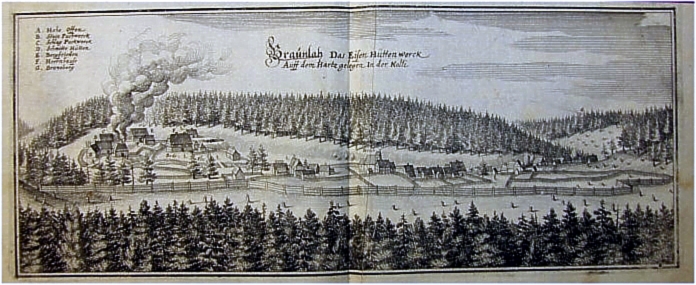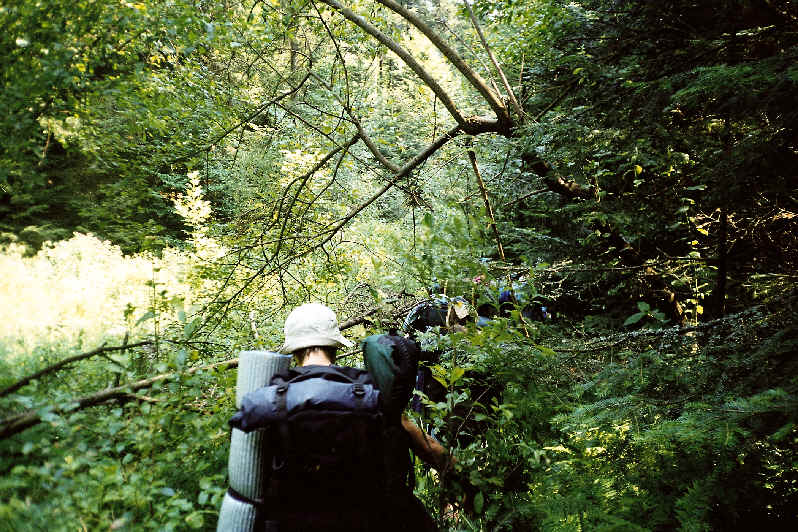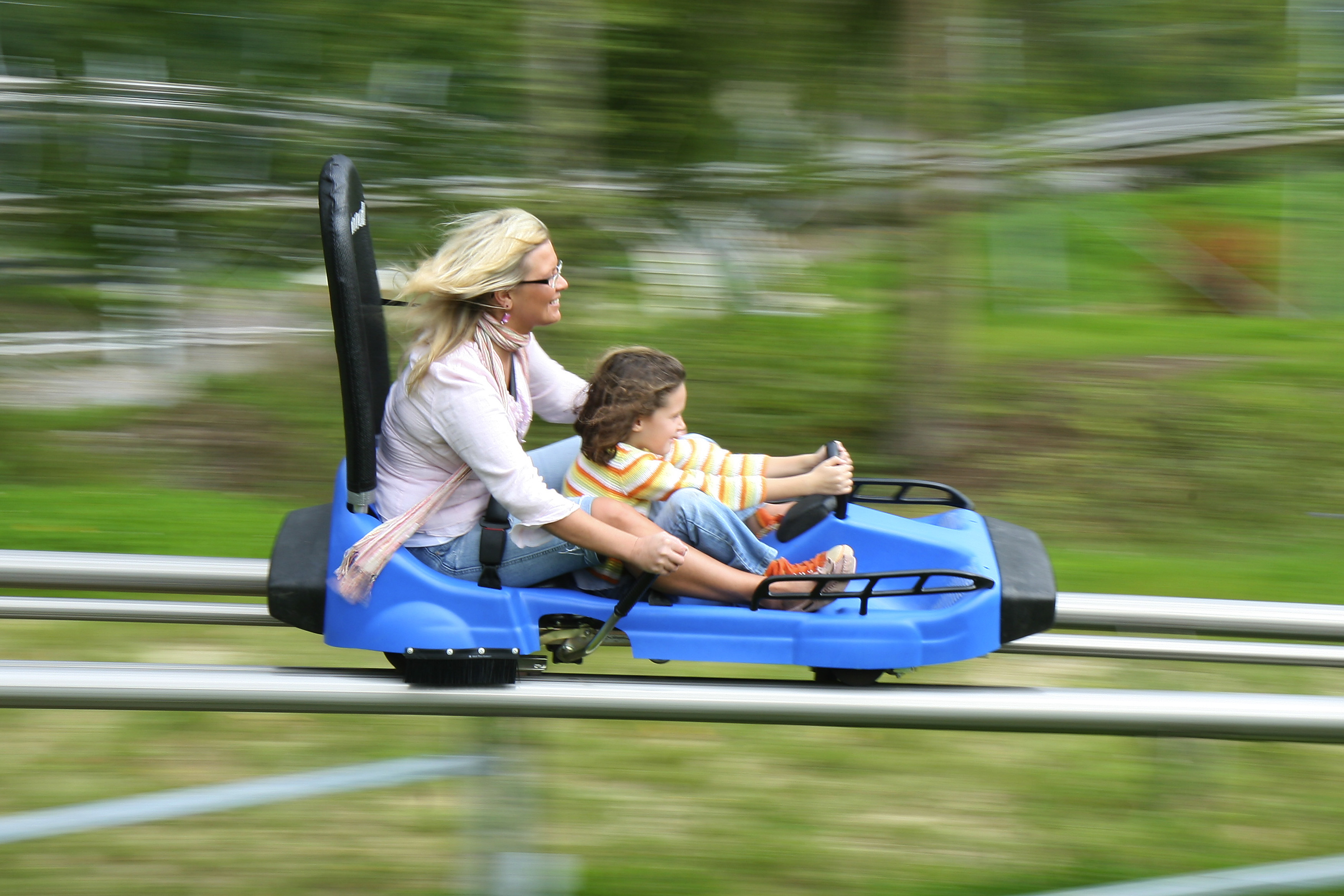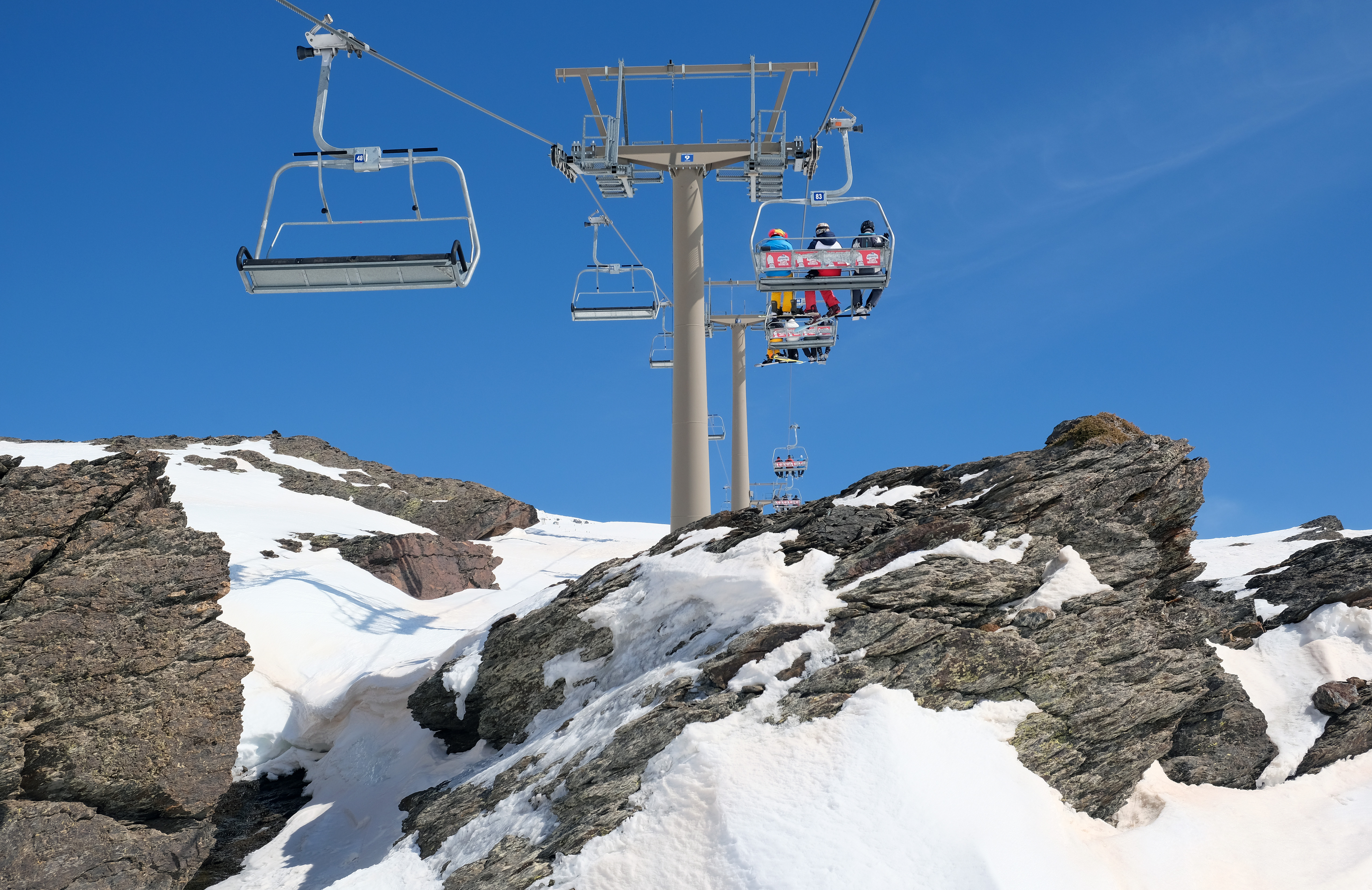|
Sankt Andreasberg
Sankt Andreasberg is a former town in the Goslar (district), district of Goslar, in Lower Saxony, Germany. Since 1 November 2011, it is part of the town Braunlage. It is situated in the Harz, approximately 7 km west of Braunlage proper, and 20 km east of Osterode am Harz. History Sankt Andreasberg was founded in the 1480s. It was first mentioned in a letter from the Count Heinrich zu Stolberg to Dietrich von Witzlebenon on 3 November 1487. The establishment of the village took place around the market. The first silver mines are assumed to be the St. Andrews Cross Mine (german: Grube St. Andreaskreuz) at the foot of the ''Beerberg'' and the St. Andrews Mine (''Grube St. Andreas'') by the market. In 1521, St. Andreasberg received the right to mine from Counts Heinrich and Ernst von Hohenstein. It was proclaimed in Mansfelder Land (district), Mansfelder Land and in the mining areas of Saxony and miners were invited to dig for silver and other metals. Natural monuments ... [...More Info...] [...Related Items...] OR: [Wikipedia] [Google] [Baidu] |
Braunlage
Braunlage () is a town and health resort in the Goslar district of Lower Saxony in Germany. Situated within the Harz mountain range, south of the Brocken massif, Braunlage's main business is tourism, particularly skiing. Nearby ski resorts include the Sonnenberg and the slopes on the Wurmberg. Geography Braunlage is located on the Warme Bode, a headstream of the river Bode, close to the border with Elend in the state of Saxony-Anhalt. The municipal area stretches along the south-eastern rim of the Harz National Park from an elevation of up to at the summit of the Wurmberg. Other peaks in the vicinity include the Achtermannshöhe and the Hahnenklee Crags. Districts The town consists of three districts: * Braunlage proper * Hohegeiß*, incorporated on 1 July 1972 * Sankt Andreasberg**, incorporated on 1 November 2011 * with the village of Königskrug ** with the villages of Sonnenberg, Oderhaus, Oderbrück, Oderberg, Odertaler Sägemühle and Silberhütte Transportation ... [...More Info...] [...Related Items...] OR: [Wikipedia] [Google] [Baidu] |
Johann Wolfgang Von Goethe
Johann Wolfgang von Goethe (28 August 1749 – 22 March 1832) was a German poet, playwright, novelist, scientist, statesman, theatre director, and critic. His works include plays, poetry, literature, and aesthetic criticism, as well as treatises on botany, anatomy, and colour. He is widely regarded as the greatest and most influential writer in the German language, his work having a profound and wide-ranging influence on Western literary, political, and philosophical thought from the late 18th century to the present day.. Goethe took up residence in Weimar in November 1775 following the success of his first novel, ''The Sorrows of Young Werther'' (1774). He was ennobled by the Duke of Saxe-Weimar, Karl August, in 1782. Goethe was an early participant in the ''Sturm und Drang'' literary movement. During his first ten years in Weimar, Goethe became a member of the Duke's privy council (1776–1785), sat on the war and highway commissions, oversaw the reopening of silver min ... [...More Info...] [...Related Items...] OR: [Wikipedia] [Google] [Baidu] |
Oderteich
The Oderteich is an historic reservoir about seven kilometres northeast of Sankt Andreasberg in the Upper Harz in central Germany. It was built by miners from St. Andreasberg in the years 1715 to 1722 and, today, is an important component of the water supply network known as the Upper Harz Water Regale (''Oberharzer Wasserregal''). Moreover, for 170 years, from the time it was completed to the end of the 19th century, the Oderteich had the largest dam in Germany.''Der Oderteich'' at www.harzlife.de. Accessed on 16 Nov 09. The lies at a height of by the B 242 federal highway, about a kilometre west of its i ... [...More Info...] [...Related Items...] OR: [Wikipedia] [Google] [Baidu] |
Ropes Course
A ropes course is a challenging outdoor personal development and team building activity which usually consists of high and/or low elements. Low elements take place on the ground or above the ground. High elements are usually constructed in trees or made of utility poles and require a belay for safety. Terminology Ropes courses are referred to using several different names, including Challenge Courses, Ropes Challenge Courses, Teams Course, and Low Ropes, as well as more idiosyncratic names such as the Challenging Outdoor Personal Experience (Project COPE) course (used by the Boy Scouts of America). An Aerial Adventure Park (or "European-Style" Adventure Park, Tree-Top Adventure course) has a more recreational purpose. Other related terms include obstacle courses, assault courses and commando courses, although these terms also have slightly different meanings, often more associated with military training than with education and training for the general public. History I ... [...More Info...] [...Related Items...] OR: [Wikipedia] [Google] [Baidu] |
Trekking
Backpacking is the outdoor recreation of carrying gear on one's back, while hiking for more than a day. It is often an extended journey, and may involve camping outdoors. In North America tenting is common, where simple shelters and mountain huts, widely found in Europe, are rare. In New Zealand, hiking is called tramping and tents are used alongside a nationwide network of huts. Hill walking is an equivalent in Britain (but this can also refer to a day walk), though backpackers make use of a variety of accommodation, in addition to camping. Backpackers use simple huts in South Africa. Trekking and bushwalking are other words used to describe such multi-day trips. Backpacking as a method of travel is a different activity, which mainly uses public transport during a journey which can last months. Definition Backpacking is an outdoor recreation where gear is carried in a backpack. This can include food, water, bedding, shelter, clothing, stove, and cooking kit. Given that back ... [...More Info...] [...Related Items...] OR: [Wikipedia] [Google] [Baidu] |
Mountain Biking
Mountain biking is a sport of riding bicycles off-road, often over rough terrain, usually using specially designed mountain bikes. Mountain bikes share similarities with other bikes but incorporate features designed to enhance durability and performance in rough terrain, such as air or coil-sprung shocks used as suspension, larger and wider wheels and tires, stronger frame materials, and mechanically or hydraulically actuated disc brakes. Mountain biking can generally be broken down into five distinct categories: cross country, trail riding, all mountain (also referred to as "Enduro"), downhill, and freeride. This sport requires endurance, core strength and balance, bike handling skills, and self-reliance. Advanced riders pursue both steep technical descents and high incline climbs. In the case of freeride, downhill, and dirt jumping, aerial maneuvers are performed off both natural features and specially constructed jumps and ramps. Mountain bikers ride on off-road trails su ... [...More Info...] [...Related Items...] OR: [Wikipedia] [Google] [Baidu] |
Hiking
Hiking is a long, vigorous walk, usually on trails or footpaths in the countryside. Walking for pleasure developed in Europe during the eighteenth century.AMATO, JOSEPH A. "Mind over Foot: Romantic Walking and Rambling." In ''On Foot: A History of Walking'', 101-24. NYU Press, 2004. Accessed March 1, 2021. http://www.jstor.org/stable/j.ctt9qg056.7. Religious pilgrimages have existed much longer but they involve walking long distances for a spiritual purpose associated with specific religions. "Hiking" is the preferred term in Canada and the United States; the term "walking" is used in these regions for shorter, particularly urban walks. In the United Kingdom and the Republic of Ireland, the word "walking" describes all forms of walking, whether it is a walk in the park or backpacking in the Alps. The word hiking is also often used in the UK, along with rambling , hillwalking, and fell walking (a term mostly used for hillwalking in northern England). The term bushwalking is end ... [...More Info...] [...Related Items...] OR: [Wikipedia] [Google] [Baidu] |
Nordic Walking
Nordic walking is a Finnish-origin total-body version of walking that can be done both by non-athletes as a health-promoting physical activity and by athletes as a sport. The activity is performed with specially designed walking poles similar to ski poles. History Nordic walking (originally Finnish ''sauvakävely'') is fitness walking with specially designed poles. While trekkers, backpackers, and skiers had been using the basic concept for decades, Nordic walking was first formally defined with the publication of "''Hiihdon lajiosa''" (translation: "A part of cross-country skiing training methodic") by Mauri Repo in 1979. Nordic walking's concept was developed on the basis of off-season ski-training activity while using one-piece ski poles. For decades hikers and backpackers used their one-piece ski poles long before trekking and Nordic walking poles came onto the scene. Ski racers deprived of snow have always used and still do use their one-piece ski poles for ski walking and h ... [...More Info...] [...Related Items...] OR: [Wikipedia] [Google] [Baidu] |
Sommerrodelbahn
A summer toboggan is an amusement or recreational ride which uses a bobsled-like sled or cart to run down a track usually built on the side of a hill. There are two main types: an Alpine coaster or mountain coaster is a type of roller coaster where the sled runs on rails and is not able to leave the track, whereas with an Alpine slide the sled simply runs on a smooth concave track usually made of metal, concrete or fiberglass. Both of these types of ride are sometimes denoted with the German name ''Sommerrodelbahn''. They are often built by ski resorts in order to use existing winter infrastructure and provide additional summer income, although some installations are part of amusement parks or are standalone. , the longest summer toboggan in the world is the long ''Tobotronc'' alpine coaster at ''Naturlandia'' in Andorra. The highest in the world is the long Glacier 3000 alpine coaster in Gstaad, Switzerland which starts at an elevation of . [...More Info...] [...Related Items...] OR: [Wikipedia] [Google] [Baidu] |
Cross-country Skiing Trail
A cross-country skiing trail or ''loipe''From german: Loipe or ''Langlaufloipe'', pl. –''n'', ''loipe'' is a loanword in English-language travel guides, referring to cross-country ski trails in Europe. It is a Germanization of the Norwegian word, ''løype,'' which originally meant a steep channel used to slide logs downhill into the valleys and which in turn came from the verb ''laupe'' ("run") whose causative ''løype,'' can translate as "to get running". is a route that has been laid out, constructed and maintained specifically for cross-country skiing. Trails may extend point-to-point, but are more typically loops for recreational use or for competition. Until the mid-20th Century, trails were tracked by the passage of skiers. More recently, snow groomers set tracks for classic skiing and smooth lanes for skate skiing. Recreational Cross-country ski venues often comprise a system of trails or ''loipes'' of varying length and difficulty that loop back to a starting point. Of ... [...More Info...] [...Related Items...] OR: [Wikipedia] [Google] [Baidu] |
Chair Lift
An elevated passenger ropeway, or chairlift, is a type of aerial lift, which consists of a continuously circulating steel wire rope loop strung between two end terminals and usually over intermediate towers, carrying a series of chairs. They are the primary onhill transport at most ski areas (in such cases referred to as 'ski lifts'), but are also found at amusement parks, various tourist attractions, and increasingly in urban transport. Depending on carrier size and loading efficiency, a passenger ropeway can move up to 4000 people per hour, and the fastest lifts achieve operating speeds of up to or . The two-person double chair, which for many years was the workhorse of the ski industry, can move roughly 1200 people per hour at rope speeds of up to . The four person detachable chairlift ("high-speed quad") can transport 2400 people per hour with an average rope speed of . Some bi and tri cable elevated ropeways and reversible tramways achieve much greater operating speeds ... [...More Info...] [...Related Items...] OR: [Wikipedia] [Google] [Baidu] |
T-bar Lift
A surface lift is a type of cable transport for snow sports in which skiers and snowboarders remain on the ground as they are pulled uphill. While they were once prevalent, they have been overtaken in popularity by higher-capacity and higher-comfort aerial lifts, such as chairlifts and gondola lifts. Today, surface lifts are most often found on beginner slopes, small ski areas, and peripheral slopes. They are also often used to access glacier ski slopes because their supports can be anchored in glacier ice due to the lower forces and realigned due to glacier movement. Surface lifts have some disadvantages compared to aerial lifts: they require more passenger skill and may be difficult for some beginners (especially snowboarders, whose boards point at an angle different than the direction of travel) and children; sometimes they lack a suitable route back to the piste; the snow surface must be continuous; they can get in the way of skiable terrain; they are relatively slow in spee ... [...More Info...] [...Related Items...] OR: [Wikipedia] [Google] [Baidu] |










